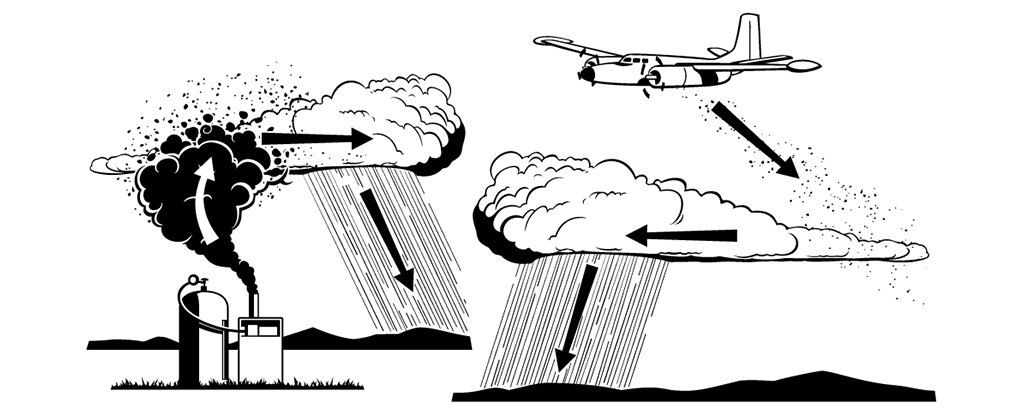You might consider bad weather on a public holiday to be a simple twist of meteorological fate, but the Russian government is determined to do something about it, with reports stating that it spent the equivalent of US$1.3 million to prevent rain on their May 1 public holiday - known locally as International Worker's Day.
A single contractor hired by the Russian government employed a technique known as cloud seeding, where various chemicals are launched into clouds in an attempt to cause precipitation earlier than expected. The idea is that rain can be forced out in certain places at certain times, leaving other areas dry.
If this sounds like a bunch of hokum, well, it might be, but weather manipulation technologies are becoming more advanced and more reliable with each passing year.
While cloud seeding, in particular, is getting a lot of attention, with all the variables involved, it's difficult to prove that it's definitely working. But that's not enough to stop anyone from giving it a shot.
Normally, silver iodide, potassium iodide, and solid carbon dioxide (dry ice) are the most commonly used chemicals in cloud seeding, though details are sketchy regarding how the job was done in Russia.
The cocktail of substances can be deployed by rocket or plane and is intended to cause water droplets to grow and fall to the ground:
 DooFi/Public Domain
DooFi/Public Domain
As The Independent's Clifford Coonan reports, Russia isn't the first country to give this a go. The Chinese authorities previously used cloud seeding to keep conditions dry at the opening ceremony for the Beijing Olympics in 2008. In that case, 1,110 rockets were fired into the sky over a period of several days.
The Bird's Nest stadium in Beijing stayed dry, but was it by pure chance, or a consequence of the cloud seeding? It's hard to say.
China is believed to have more people employed in the business of weather modification than any other nation. Still, even experts in the field have no idea how to actually tell whether a storm was the result of seeding or simply happened on its own.
Cloud seeding is also being used to combat severe drought. Bloomberg's Amanda Little reports that the technique was previously used in Maharashtra, India to bring forth rain. "Our situation is severe," said the minister of revenue in Maharashtra, Eknath Khadse. "There is no other technology available in the world to bring more rains. We must be willing to try it."
Meteorological experts seem divided on the topic of weather manipulation, and even if it does work, there might be unwelcome side effects we haven't noticed yet.
But if the money and desperation are there, people are willing to try it. You can even order some cloud seeding in advance of your wedding if you'd like to.
"There's little dispute that if you can actually get the seeding material inside the clouds, it will enhance precipitation," weather scientist Dan Breed told Little. "The question is, by how much?"
No two clouds are the same, of course, so every new experiment is running with a new set of conditions and variables.
As for Russia's public holiday, did the experiment work? Well, reports say there was light rain on the day, so did the cloud seeding work and lessen the impact of the rain, did it fail because there was rain? Did it have any effect at all? That's the problem - it's virtually impossible to tell.
